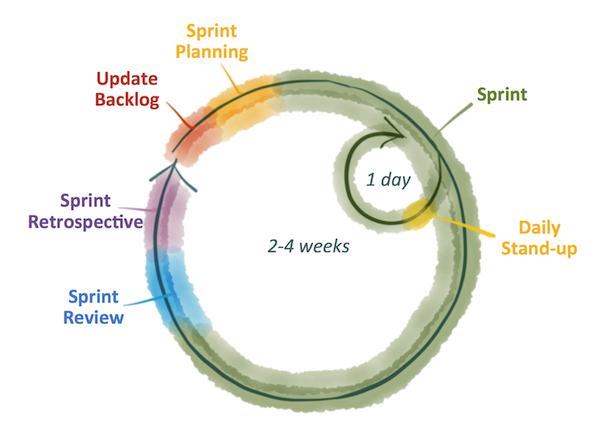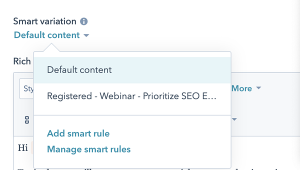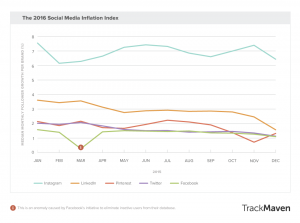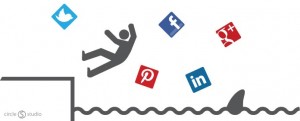The day to day in any agency can be a crazy to and fro experience. Whether it’s meetings or things that need to get done, the focus on productivity, multiple clients, multiple projects and other responsibilities makes it hard to keep track of what direction everyone is heading in on any given day. Every detail in every project is someone’s responsibility and one missing piece of the puzzle can risk a client relationship. Not to mention the changes from day to day in the marketing and SEO world. You know the ones, Facebook’s algorithm shifts (pun not intended) to the left or Google updates Panda….again.
Each of those things has an impact on the things our team is producing. Oftentimes we’ll be in the midst of one project only to modify it because of news from one source or another. We pride ourselves on staying on top of things, but that can create havoc and stress for teams without a process to make sure nothing gets lost in the shuffle.
At SHIFT, the Marketing Technology team has turned to the Agile development methodology to help keep track of what’s going on team wide, where people are stuck, where someone needs help and what questions they have, so that every day we’re able to go with the flow of changes that may come from any of the sources above.
Agile Marketing In Detail

Scott Brinker’s Drawing of Agile Marketing Framework
Agile marketing moves us away from the standard organization and waterfall structures that can prevent us from doing the best job we can. In a traditional development or marketing environment, there’s a methodology called waterfall. You scope out what you’re going to do in exact detail, get approvals and revisions, then go do it for weeks or months at a time. When the project is done, you report back on how it went — and very often, there’s a requirement that wasn’t in the input gathering sessions, or the environment around you changed.
For example, in a waterfall environment, you might design a yearlong Facebook marketing strategy, with a certain number of posts per day, a specific budgetary spend per day, etc. Midway through that year, Facebook changes the rules on everyone, and suddenly what started out as a well-designed strategy becomes a liability that you might not be able to change in a traditional waterfall organizational structure.
This is why we started experimenting with the Agile framework. It puts the work (and clients!) first while setting aside the aspects of organization that impedes us from getting things done.
Agile marketing also focuses on developing a client story and going back to that story to define what we’re doing. In my experience, setting up a story for each client is the way to do it, though it makes the simplistic Agile principles a little messier for our team. We work through that by making sure everything is moving ahead, but that’s where management stepping in does come in handy, to clarify priorities.
Cross functional individuals of a team is what makes Agile work so well. One person may have more knowledge about paid media while another has more knowledge about social. They can then work together to complete any one aspect of projects for clients, while the other members of the team can focus on other areas (SEO or data) without holding the other two people back until they complete their work.
We keep track of what those individuals are working on with a 10-15 minute stand-up meeting per day in which we answer three questions. These questions help us keep everything moving forward on a daily basis rather than waiting for the next weekly meeting or sending thousands of emails to get what we need.
- What we’ve done.
- What we’re doing.
- What’s stopping us from moving forward.
And finally, Agile marketing puts the emphasis on acting. It avoids or reduces internal politics, takes us back to the client needs and allows us to know when to say something isn’t possible because it isn’t what the client needs.
3 Lessons We’ve Learned from Agile Marketing
Transparency – On any given day, we know which individuals are working on which projects together, what they’ve done this week and where they are stuck. We know what work is getting accomplished and where someone might need help or training. This helps me as a manager determine where, on an individual level, I can help my team do better work and feel accomplished in completing projects successfully.
Agility – This lesson learned is probably the most obvious to you at this point in the post, but we can re-prioritize instantly. Inevitably, in the world of clients and agencies, there are changes day to day that need to be taken into consideration, rather than starting from scratch at every request. We can roll those changes into what we’re working on currently and get the client what they need. (Clients who have unrealistic expectations or timeframes not counted.)
Accountability – Everyone knows who is responsible for which aspects of which projects. We know who to ping for answers about what’s getting done rather than falling into the old method of “everyone thought someone was doing it but no one did it”. We hold each other to the standards of the department together.
While our team is still working out a handful of kinks in our processes within the system, Agile helps us increasingly focus on those priorities. One thing I haven’t mentioned above is that it also helps us focus our individual priorities rather than feeling the pressure of “what do I need to work on next”. The answer is presented at the start of every day.
If this Agile framework sounds like something you’d like to try, then give this video on Agile framework on Moz Whiteboard Friday a watch, read Scott Brinker’s ChiefMarTec blog, dig into the different aspects of Agile marketing and frame out where your issues in adoption might lie. That will set you up for success. Most of all, do it — embrace the chance to do things better for your company, clients and team.
Business Articles | Business 2 Community
(490)









